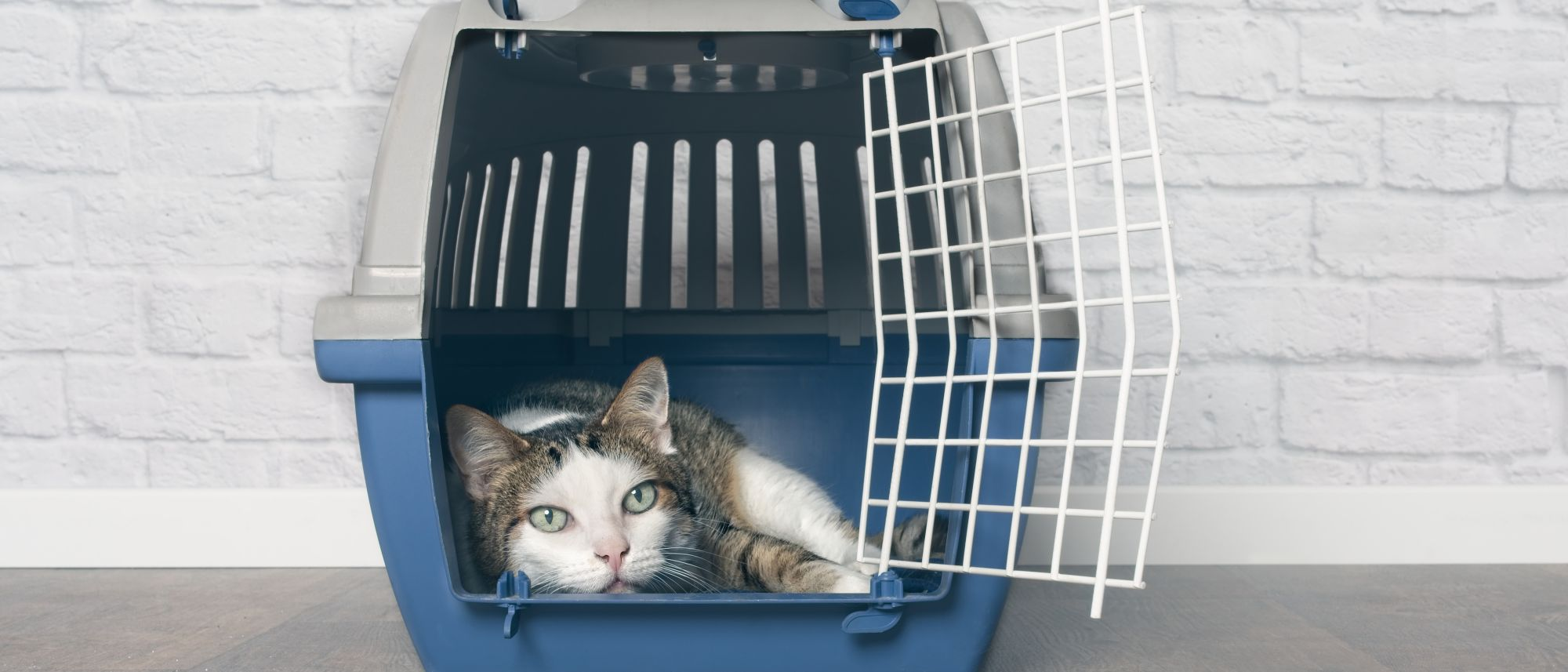Travelling with cats
Unlike dogs, cats are real homebodies and usually hate being taken away from their familiar territory. So when a trip is necessary, you need to make them feel as secure as possible and ensure that they don’t escape. Never travel with your cat loose in the car – it’s not safe and they could escape if you open a door or window. Let’s take a look at the options available to keep your cat secure.Carrier recommendations
A good cat carrier can help to make a journey with your cat safe and less stressful for your feline friend. There are different types of carrier available made from different materials, with different opening points and closures so think about what will work best for your cat. Most are just the right size for an average adult cat – enough room for them to be comfortable but still snug enough that they feel secure. But if you have a large cat, you will need a larger carrier! A good carrier is sturdy, secure and easily cleaned so avoid the cheap cardboard ones, which fail on all these points.The cage type carriers are lightweight and allow you to easily check on your cat. They can feel vulnerable in these though, so have a blanket handy to cover them, leaving one end for them to keep an eye on what’s going on.
Solid plastic carriers are great for making the cat feel more secure, but many only have a front opening. This makes it tricky to get an unwilling cat inside – they will suddenly be all legs and you’ll need to turn the basket on its side and lower them in. Conversely, when you arrive at the end of your journey, your cat is unlikely to want to come out and trying to get it out through the opening can be difficult. Remember to line your carrier with newspaper and some light bedding. Make sure it is washable and that you bring a spare if possible in case you cat has an accidents.
Further carrier options
The best option is a carrier that has two openings – the front gate is more encouraging for cats to come and go willingly, but the top opening is much easier when you have to get them in or out.Your vet may even be able to examine them without removing them from this double-doored carrier, which will help to keep them calm. It is quite heavy though once the cat is inside, so it isn’t ideal if you have to carry it a long way.
There are also now plenty of fabric carriers available, which are lightweight and easy to store.
Some cats can get used to a harness and lead with gentle training, but even if your cat is lead-trained it is still recommended to use a cat carrier when travelling in an unfamiliar environment.
Contently and conveniently
One of the things that can be particularly difficult and stressful for both cats and their owners is getting the cat into the carrier. Just the sight of the carrier can cause many cats to panic because they only associate it with unpleasant events. Getting your cat used to it in advance can help. To help reduce the fear that your cat associates with the carrier, permanently leave it open and in one of your cat’s favourite places. If this isn’t possible, try to take it out a few days before the trip so they can get accustomed to it. Prepare the carrier before use by spraying inside with a pheromone spray to help create a calming environment. Keep your cat indoors the night before your trip so that they are still there the next day at the time you need them.To reduce the risk of car sickness avoid feeding them for a few hours before you set off. Use a carrier for each cat you are transporting, as they do not appreciate being in close confinement with another cat when they are feeling stressed. Place the carrier somewhere secure within the car, ideally on a seat secured with a seatbelt. When you put the carrier down anywhere, try to place it on a raised surface, as your cat will feel more secure if they are off the floor.
One final thing before you go...
If you are planning a long journey with your cat, speak to your vet about the best way to manage them during the trip. Your vet will also be able to let you know about the Pet Travel Scheme if you need to travel abroad with your cat. With a little time and thought, keep your cat calm and make the journey as relatively stress-free as possible for both of you. If travelling with your cat simply isn’t an option, take a look at our cat holiday care article to find out who you can leave your cat with, and where, when travelling.
